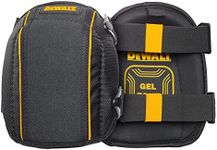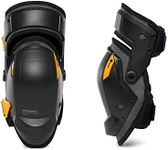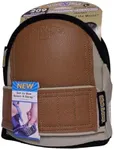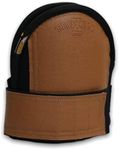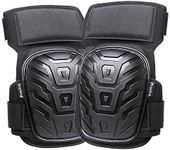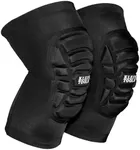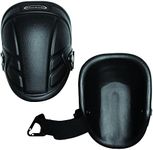Buying Guide for the Best Work Knee Pads
Choosing the right work knee pads is important for anyone who spends a lot of time kneeling, whether for construction, gardening, flooring, or other hands-on tasks. The right knee pads can protect your knees from injury, reduce discomfort, and help you work longer and more safely. When shopping for knee pads, it's important to consider how and where you'll use them, as well as your comfort and mobility needs.Padding MaterialPadding material refers to what the knee pad uses to cushion your knees. Common materials include foam, gel, and rubber. Foam is lightweight and offers basic protection, making it suitable for light tasks or occasional use. Gel padding provides more comfort and better shock absorption, ideal for prolonged kneeling or heavy-duty work. Rubber padding is durable and often used for industrial settings. To choose the right one, think about how long and how often you'll be kneeling—if it's for extended periods or on hard surfaces, gel or thick foam is usually best.
Outer Shell TypeThe outer shell is the part of the knee pad that touches the ground. It can be soft, hard, or a combination. Hard shells are made from plastic and are great for rough or uneven surfaces, offering strong protection but sometimes less grip. Soft shells are quieter and provide better grip on smooth surfaces, making them good for indoor work like flooring. Some knee pads combine both for versatility. Consider the surfaces you'll be working on most often to decide which shell type fits your needs.
Strap SystemThe strap system keeps the knee pads in place. There are different types, such as single or double straps, and they can be made from elastic, Velcro, or buckles. Double straps usually offer a more secure fit and prevent the pads from slipping, while single straps are quicker to put on and take off. Elastic straps are comfortable but may stretch over time, while Velcro allows for easy adjustment. If you move around a lot, look for a secure, adjustable system that won't dig into your skin.
Fit and SizeFit and size determine how well the knee pads stay on and how comfortable they are. Some knee pads come in different sizes, while others are one-size-fits-most with adjustable straps. A good fit means the pads stay in place without sliding down or pinching. If possible, try them on or check sizing guides to ensure they match your leg size and shape. If you have larger or smaller legs, look for brands that offer multiple sizes.
BreathabilityBreathability refers to how well the knee pads allow air to circulate, which helps keep your knees cool and reduces sweating. Some knee pads have mesh panels or moisture-wicking linings for better airflow. If you work in hot environments or wear knee pads for long periods, breathability becomes more important to prevent discomfort and skin irritation.
DurabilityDurability is about how well the knee pads hold up over time, especially with frequent use. Look for reinforced stitching, tough outer materials, and high-quality padding that won't flatten quickly. If you use knee pads daily or in harsh conditions, prioritize durability to avoid frequent replacements.


